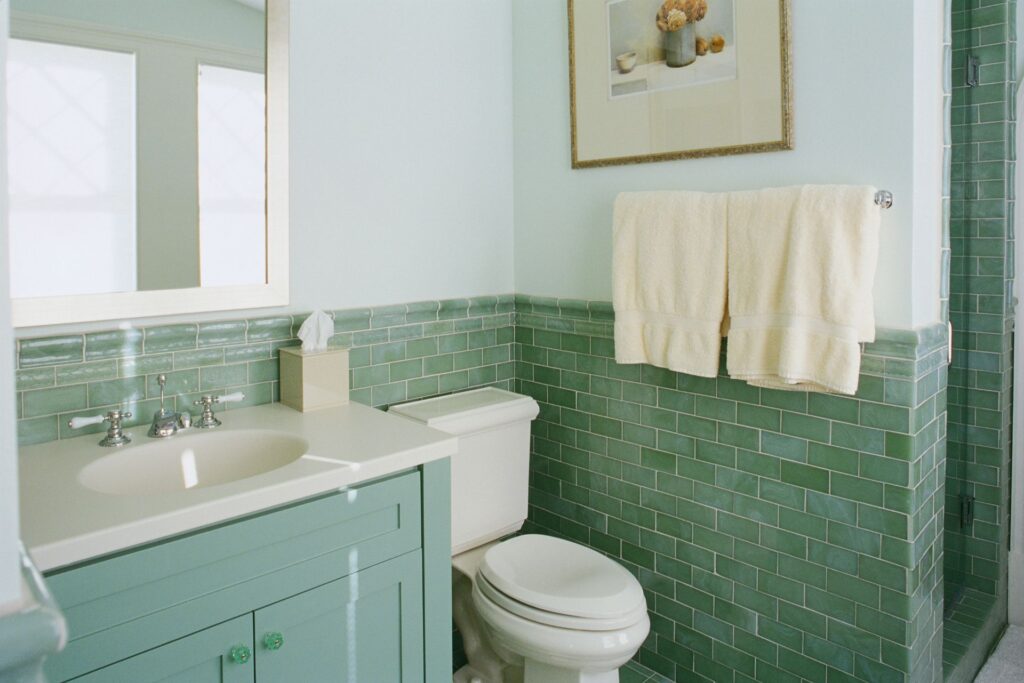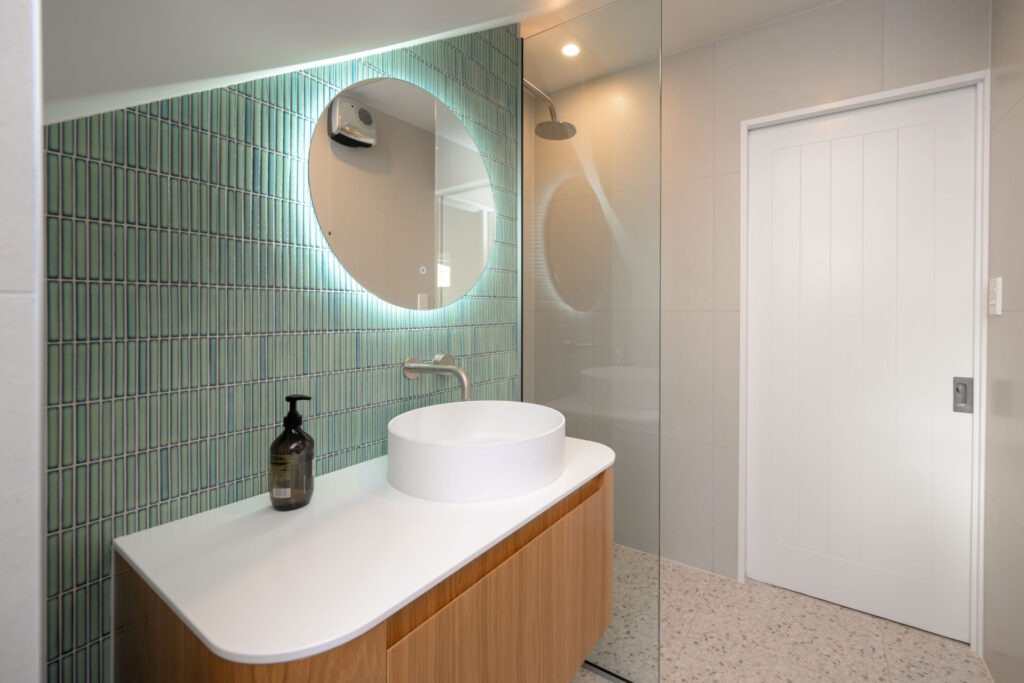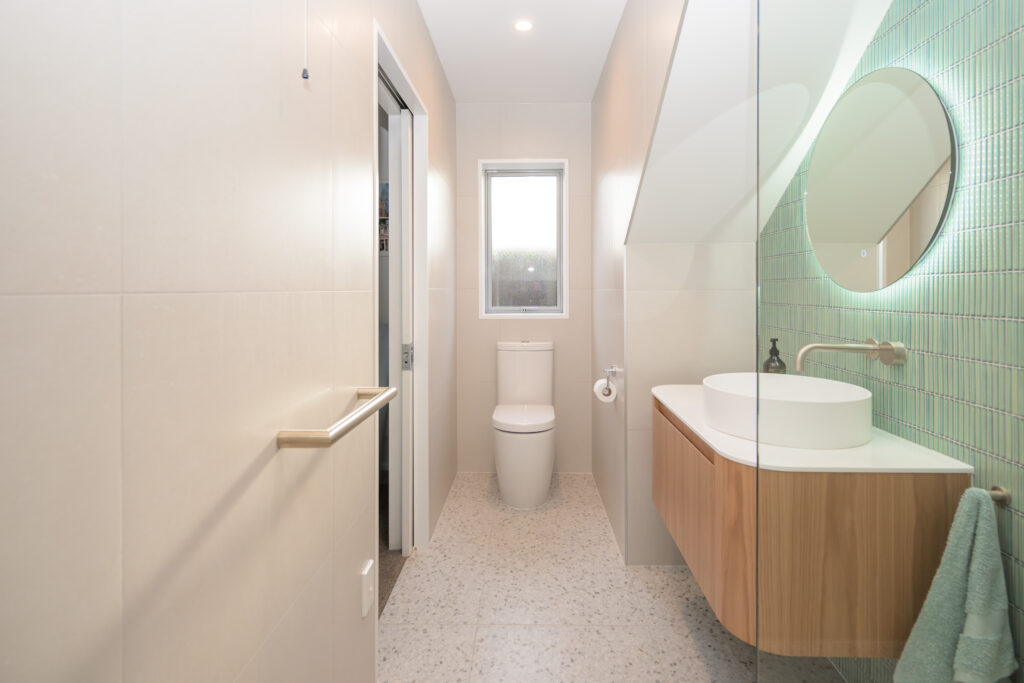Welcome to your ultimate guide on finding the best material for bathroom walls in New Zealand! Whether you’re updating an outdated bathroom or starting from scratch with a fresh build, choosing the right wall material is crucial for both functionality and style. Your bathroom faces daily challenges like moisture, humidity, and frequent use, so the walls need to be durable, moisture-resistant, and easy to maintain. Plus, in New Zealand, with its unique climate variations, you’ll want something that suits both the environment and your aesthetic preferences. In this guide, we’ll explore the top materials available, weighing the pros and cons of each, so you can make an informed choice that fits your needs, budget, and design vision. Let’s dive into the best options to transform your bathroom into a space you’ll love!
The best material for bathroom walls in New Zealand depends on factors like moisture resistance, durability, and style. Popular choices include tiles for their waterproof nature and versatile designs, acrylic panels for an easy-to-install and budget-friendly option, and moisture-resistant paint for a cost-effective solution. For a luxurious finish, consider glass panels, while wood or vinyl wallpaper offers unique, aesthetic options. Choose a material that fits your budget, maintenance needs, and the New Zealand climate to ensure long-lasting and stylish bathroom walls.
- Why The Right Bathroom Wall Material Matters
- Key Factors To Consider When Choosing Bathroom Wall Materials
- Top Bathroom Wall Materials For NZ Homes
- Which Bathroom Wall Material Is Right For You?
- Installation And Maintenance Tips
- FAQs: About Best Material For Bathroom Walls NZ
- What is the most durable material for bathroom walls in New Zealand?
- Can I use regular paint on bathroom walls?
- Is wood a good option for bathroom walls in NZ?
- What’s the best material for a bathroom in coastal areas of New Zealand?
- How do I prevent mold and mildew on bathroom walls?
- Are acrylic panels a good choice for bathroom walls?
- What is the most budget-friendly material for bathroom walls?
- How often should I clean bathroom walls, and does the material matter?
- Can I install bathroom wall materials myself, or should I hire a professional?
- What’s the best material for a luxury bathroom in New Zealand?
- Conclusion
Why The Right Bathroom Wall Material Matters
Choosing the right bathroom wall material is crucial for both the longevity and the appearance of your bathroom, particularly in regions like New Zealand where climate variations can lead to different challenges.
Moisture and Humidity Resistance
Bathrooms are constantly exposed to moisture and high humidity levels, and these conditions can wreak havoc on unsuitable wall materials. In New Zealand, where humidity can fluctuate between seasons and regions, materials that aren’t moisture-resistant can deteriorate quickly. Over time, moisture can cause paint to peel, wallpaper to bubble, and tiles to loosen, leading to costly repairs. Ensuring your bathroom walls are made from water-resistant materials is essential to protect against these common issues.
Aesthetic Appeal
Beyond functionality, the right wall material can elevate the overall look of your bathroom. Whether you prefer a sleek, modern design, a classic look, or something more rustic, selecting the appropriate material allows you to enhance your home’s aesthetic. Materials like tiles, for instance, come in various styles and patterns, enabling you to match the design theme of your home while ensuring durability.
Long-Term Durability
Investing in quality wall materials upfront pays off in the long run. Cheaper materials may seem cost-effective initially, but they often require frequent maintenance and repairs. Durable materials, like waterproof tiles or moisture-resistant panels, ensure your bathroom stays in excellent condition for years, saving you money on repairs and replacements.
Mold and Mildew Concerns
Bathrooms are prone to mold and mildew, particularly in areas with poor ventilation. Choosing mold-resistant materials like PVC panels or treated tiles can help combat this issue, creating a healthier, cleaner environment. Materials that resist mold growth are not just more hygienic but also reduce the need for continuous upkeep, making them a smart choice for any bathroom.
By carefully selecting the right materials, you ensure a beautiful, long-lasting bathroom that’s built to withstand New Zealand’s climate challenges.

Key Factors To Consider When Choosing Bathroom Wall Materials
When selecting materials for your bathroom walls, several factors need to be considered to ensure functionality, longevity, and style. Bathrooms are unique spaces due to their exposure to moisture, so the right wall materials can make a significant difference in both the look and durability of your bathroom.
Moisture Resistance
The most crucial aspect to consider when choosing bathroom wall materials is how well they handle water and humidity. Bathrooms are constantly exposed to moisture from showers, sinks, and even the air. Materials like tiles, acrylic, and water-resistant paints are designed to withstand high humidity without warping, staining, or fostering mold growth. Non-porous surfaces, such as ceramic tiles or glass, are ideal as they resist water absorption, keeping the walls protected and easy to maintain.
Easy Maintenance
Bathroom walls require materials that are simple to clean and maintain, especially in high-traffic homes. Stains, soap scum, and mildew can accumulate quickly, so selecting materials like tiles, waterproof wallpapers, or treated wood can reduce the amount of time spent on upkeep. Glossy finishes, such as certain paints or wall panels, are also advantageous as they make wiping down dirt and grime a breeze.
Aesthetic Flexibility
Beyond functionality, your bathroom wall materials should complement your overall design vision. Certain materials offer more aesthetic flexibility than others. Tiles, for example, come in a vast array of colors, patterns, and textures, making them suitable for a wide range of styles—from modern minimalism to rustic charm. Even waterproof wallpapers can bring a burst of personality to your bathroom with bold patterns or subtle textures, allowing you to personalize your space without compromising on practicality.
Budget
When choosing bathroom wall materials, balancing cost and quality is essential. High-end materials like marble can deliver luxury and durability but come with a higher price tag. On the other hand, more budget-friendly options such as ceramic tiles or waterproof paint can offer a similar aesthetic without breaking the bank. It’s important to choose a material that not only suits your design goals but also fits within your budget.
Environmental Impact
For those looking to make eco-conscious choices, there are plenty of sustainable bathroom wall materials available. Options like recycled glass tiles, low-VOC paints, and sustainably sourced wood are great for reducing your carbon footprint while still delivering an attractive and durable finish. Prioritizing environmentally friendly materials can be both a stylish and responsible choice for your bathroom design.
By carefully considering these factors, you can choose the perfect wall materials that meet both your aesthetic preferences and functional needs.

Top Bathroom Wall Materials For NZ Homes
When designing or renovating a bathroom in New Zealand, choosing the right wall material is crucial. Not only do you want something aesthetically pleasing, but it should also withstand moisture and be easy to maintain. Whether you’re after a sleek, modern look or a warm, natural feel, there are several bathroom wall materials available that can suit your style and budget. In this guide, we explore the most popular options for New Zealand homes, their benefits, drawbacks, and where they work best.
Tiles: Timeless and Versatile
Tiles are a staple in many NZ bathrooms, known for their versatility and durability. Whether you’re renovating a traditional space or aiming for a contemporary aesthetic, tiles offer a wide range of design options to fit any style. Available in various sizes, textures, and finishes, tiles can be used on walls, floors, or even as decorative accents.
Pros:
- Moisture-resistant: Tiles are excellent at repelling water, making them ideal for wet areas like showers.
- Durable: With proper care, tiles can last for decades.
- Easy to clean: Tiles are low maintenance and can be easily wiped down.
- Variety: From porcelain to ceramic, tiles come in many styles, colors, and patterns.
Cons:
- Cold to touch: Tiles can feel cold underfoot, though this can be mitigated with underfloor heating.
- Grout maintenance: Grout between tiles can get stained or moldy if not properly sealed.
- Best for: Both modern and traditional bathrooms, as well as high-moisture areas like wet rooms.
Acrylic Panels: Modern and Low Maintenance
Acrylic shower panels are a rising trend in bathroom design. These sleek, waterproof panels offer a seamless finish that is perfect for contemporary bathrooms. Acrylic panels are an excellent option for homeowners seeking a quick and budget-friendly solution.
Pros:
- Waterproof: Acrylic panels provide a watertight surface, making them ideal for shower enclosures.
- Easy to install: These panels can be fitted quickly, reducing labor costs.
- Affordable: Generally, acrylic is a more cost-effective option compared to tiles or glass.
- Low maintenance: They are easy to clean and do not require grout, reducing upkeep.
Cons:
- Limited design options: Acrylic panels don’t offer as many design choices as tiles.
- Appearance: While functional, they may not have the high-end look that some homeowners seek.
- Best for: Budget-friendly renovations or modern, minimalist bathrooms.
Fibreglass Panels: Lightweight and Practical
Fibreglass panels are popular in prefab homes or budget-conscious renovations. While not as stylish as tiles or glass, they are practical and easy to install.
Pros:
- Lightweight: Fibreglass is easy to handle and install.
- Waterproof: Like acrylic, fiberglass panels are resistant to moisture.
- Affordable: One of the most cost-effective bathroom wall materials available.
Cons:
- Not as durable: Fibreglass can wear down or yellow over time, especially in high-traffic areas.
- Less stylish: These panels may not offer the luxurious feel that tiles or glass provide.
- Best for: Quick renovations, rental properties, and prefab homes.
Glass Panels: Sleek and Luxurious
Glass panels add a touch of luxury to any bathroom. Known for their sleek, minimalist design, glass can create a sense of openness, making small bathrooms feel more spacious.
Pros:
- Waterproof: Glass panels are completely watertight and ideal for shower walls.
- Easy to clean: Their smooth surface allows for quick cleaning.
- Luxurious look: Glass provides a modern, high-end aesthetic that elevates bathroom designs.
Cons:
- Expensive: Glass panels come at a higher price point than other materials.
- Watermarks: They can show watermarks, requiring regular cleaning to maintain their shine.
- Best for: High-end, minimalist bathrooms or small spaces where you want to create a more open feel.
Moisture-Resistant Paint: Flexible and Cost-Effective
For a budget-friendly solution, moisture-resistant paint can be a great option for bathroom walls. Available in a wide range of colors, it allows homeowners to change the look of their bathroom without committing to more expensive materials.
Pros:
- Affordable: Paint is one of the least expensive options for bathroom walls.
- Flexible design: You can easily switch colors or patterns to match your decor.
- Easy to update: Changing the color or refreshing the walls is as simple as applying a new coat.
Cons:
- Less durable: Paint may not last as long as tiles or panels, particularly in high-moisture areas.
- Regular upkeep: It requires more maintenance to avoid peeling or fading over time.
- Best for: Guest bathrooms, powder rooms, or budget-conscious renovations.
Vinyl Wallpaper: Stylish and Water-Resistant
Vinyl wallpaper is gaining popularity as a stylish and practical option for bathroom walls. Its waterproof nature makes it suitable for damp environments while offering endless design possibilities.
Pros:
- Water-resistant: Vinyl wallpaper can withstand moisture, making it suitable for bathrooms.
- Easy to install: Applying wallpaper is a quick and relatively simple task.
- Variety of designs: It offers a wide range of colors, patterns, and textures.
Cons:
- Peeling: In high-humidity bathrooms, vinyl wallpaper may start to peel over time.
- Ventilation required: This material works best in bathrooms with good airflow.
- Best for: Statement walls or bathrooms with excellent ventilation.
Wood Panels: Warm and Natural Aesthetic
For a rustic or coastal look, wood panels or faux wood options can add warmth and character to your bathroom. Properly treated wood can handle moisture, but it does require maintenance to prevent damage.
Pros:
- Natural beauty: Wood adds warmth and a unique aesthetic to bathroom spaces.
- Eco-friendly: Many wood panels are made from sustainable materials.
Cons:
- Moisture damage: Wood must be properly sealed to prevent warping or rotting.
- Maintenance: Regular care is necessary to ensure long-lasting durability.
- Best for: Rustic or coastal homes, accent walls, and bathrooms with lower moisture exposure.
By carefully choosing the right bathroom wall material for your home, you can achieve both the aesthetic and practical functionality you desire. Whether you prioritize luxury, budget, or sustainability, there’s a perfect option for every New Zealand bathroom.

Which Bathroom Wall Material Is Right For You?
When choosing the best bathroom wall material for your home, there are several factors to consider, including the aesthetic style, budget, and the specific climate of New Zealand. Bathrooms endure significant moisture and temperature fluctuations, making material selection essential for longevity and ease of maintenance. Whether you’re after a modern, rustic, or luxurious look, there’s a wall material suited to your needs.
For Modern and Contemporary Bathrooms
If you’re aiming for a sleek, clean-lined aesthetic, modern and contemporary bathrooms often feature materials like tiles, glass panels, and acrylic panels. These materials offer a polished, sophisticated look, creating a minimalist, clutter-free environment.
Tiles, in particular, are highly versatile, coming in various sizes, shapes, and finishes. They are also incredibly durable and resistant to moisture, making them ideal for high-traffic bathrooms. Glass panels add a touch of luxury, often used in walk-in showers or as sleek wall coverings. They reflect light, making small bathrooms appear more spacious while being easy to clean and maintain. Acrylic panels, on the other hand, are a cost-effective alternative to glass, providing a similar glossy finish without the hefty price tag.
For Rustic or Coastal Vibes
For those seeking a more natural, warm ambiance in their bathroom, wood panels and moisture-resistant paint are excellent options. Wood panels evoke a sense of rustic charm and are perfect for creating a cozy, inviting space. While wood may seem unsuitable for a wet environment like a bathroom, there are now treated, water-resistant options that can withstand high humidity levels.
Coastal-themed bathrooms, popular in many New Zealand homes, often feature moisture-resistant paint in soft, neutral tones that mimic the ocean and sand. Paint is an affordable, easy-to-apply solution that allows for creativity in design. Just ensure it’s specifically formulated for bathrooms to resist mold, mildew, and peeling.
For Budget-Conscious Homeowners
If you’re working within a budget, acrylic or fiberglass panels and moisture-resistant paint are your best choices. These materials provide good durability and moisture resistance without the higher costs associated with tile or glass.
Acrylic panels are especially popular due to their easy installation and maintenance. They come in a variety of finishes and can mimic the look of more expensive materials at a fraction of the cost. Similarly, fiberglass panels are lightweight and simple to install, offering excellent water resistance for the budget-conscious renovator. Moisture-resistant paint can be a cost-effective solution as well, allowing you to create a fresh look without breaking the bank.
For Luxury Spaces
If you’re looking to create a spa-like retreat, nothing beats glass panels or high-end tiles. Glass panels exude elegance and luxury, transforming your bathroom into a serene, light-filled space. Their reflective nature enhances the overall brightness of the room, making even small bathrooms feel open and airy.
High-end tiles, like marble or porcelain, bring a timeless elegance to luxury bathrooms. These materials are not only aesthetically stunning but also extremely durable and water-resistant. They allow for creative designs and patterns, turning your bathroom walls into a visual masterpiece. These materials can elevate your bathroom into a high-end space reminiscent of a spa or resort.
Considering NZ’s Climate
When choosing bathroom wall materials in New Zealand, it’s important to factor in the country’s varied climate. Coastal areas, in particular, experience high humidity and salt in the air, which can lead to mold growth or material degradation if the wrong materials are used. In these regions, consider using mold-resistant materials like glass panels, acrylic, or moisture-resistant paint to ensure longevity.
In colder regions, materials that can withstand temperature fluctuations, like tiles or fiberglass, are a great choice, as they are less likely to crack or warp over time. By carefully considering the climate in your area, you can choose the most durable and effective material for your bathroom.
Final Thoughts
Selecting the right bathroom wall material is essential for both the function and style of your space. Whether you’re drawn to a sleek modern look, a rustic feel, or the ultimate luxury, there’s a material that fits your vision, budget, and the unique climate challenges of New Zealand.
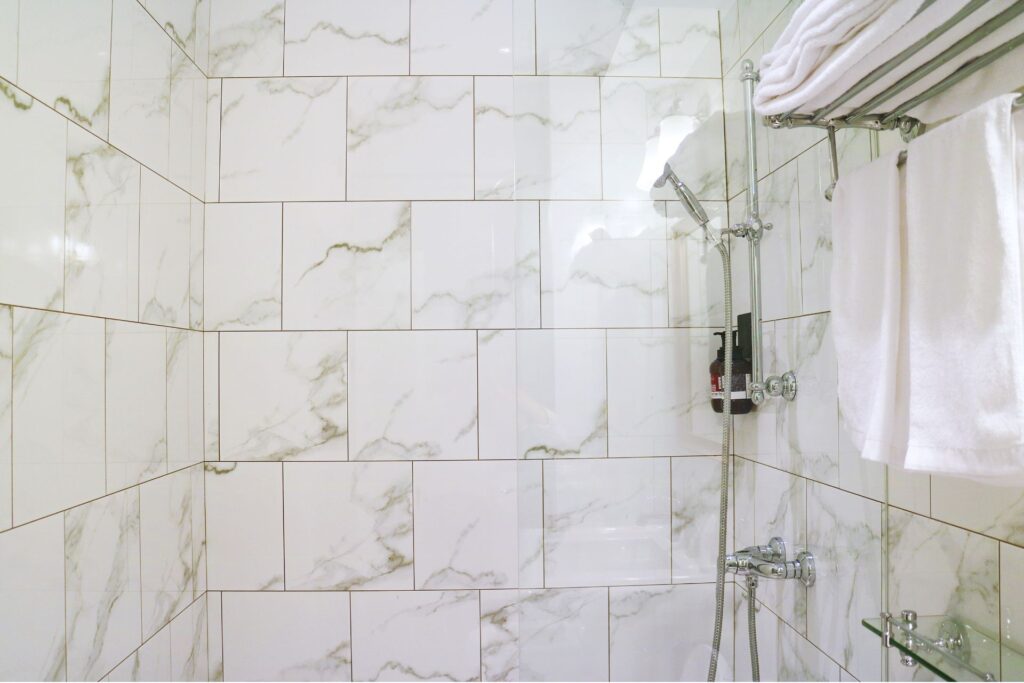
Installation And Maintenance Tips
When it comes to installing and maintaining your bathroom walls, it’s crucial to make the right choices to ensure both functionality and aesthetic appeal. Below are some essential tips to help you navigate through installation and maintenance, whether you’re considering a DIY project or seeking professional help.
DIY vs. Hiring a Professional
Not all bathroom wall projects are created equal. Some tasks are ideal for the DIY enthusiast, while others may require the skills of a professional. For instance, painting or installing vinyl wallpaper are relatively simple tasks that many homeowners can handle on their own. These jobs typically don’t require specialized tools or experience and can often be completed over a weekend.
However, when it comes to more complex tasks like tiling, it’s often better to hire a professional. Tiling requires precision, especially in a bathroom where moisture can cause long-term damage if not done correctly. Professionals will ensure that your tiles are aligned, grouted, and sealed properly, reducing the risk of future repairs or costly mistakes.
Maintenance Tips by Material
Proper maintenance is key to keeping your bathroom walls looking fresh and functioning well over time. Here are some tips for different materials:
- Tiles: Grout lines can easily accumulate dirt and mold, so it’s important to clean them regularly using a grout cleaner or a mix of vinegar and water. Seal the grout every 6-12 months to prevent moisture from seeping in.
- Painted Walls: Use moisture-resistant paint in bathrooms to minimize damage. Regularly wipe down walls to prevent mildew buildup, especially in high-moisture areas.
- Wood: If you have wood panels or trim in your bathroom, ensure they’re sealed properly to prevent warping from humidity. Clean wooden surfaces with a damp cloth and use a wood conditioner annually.
- Vinyl Wallpaper: Vinyl is a great choice for moisture-rich environments. It requires minimal maintenance—simply wipe with a damp cloth to remove any residue.
Ventilation and Humidity Control
Maintaining proper ventilation in your bathroom is crucial to prevent mold and moisture damage on your walls. Installing an exhaust fan is one of the best ways to reduce humidity levels, especially after a shower or bath. Make sure the fan is properly sized for your bathroom and clean the fan filter regularly to ensure optimal performance.
For bathrooms without windows or adequate ventilation, consider using a dehumidifier to keep moisture levels in check. Also, wipe down walls after showering and keep bathroom doors open to allow air circulation. These simple steps can go a long way in preserving the life of your bathroom walls.
By following these installation and maintenance tips, you can ensure your bathroom walls remain in great condition for years to come. Whether you’re tackling a DIY project or calling in a pro, a well-maintained bathroom can elevate your home’s value and comfort.
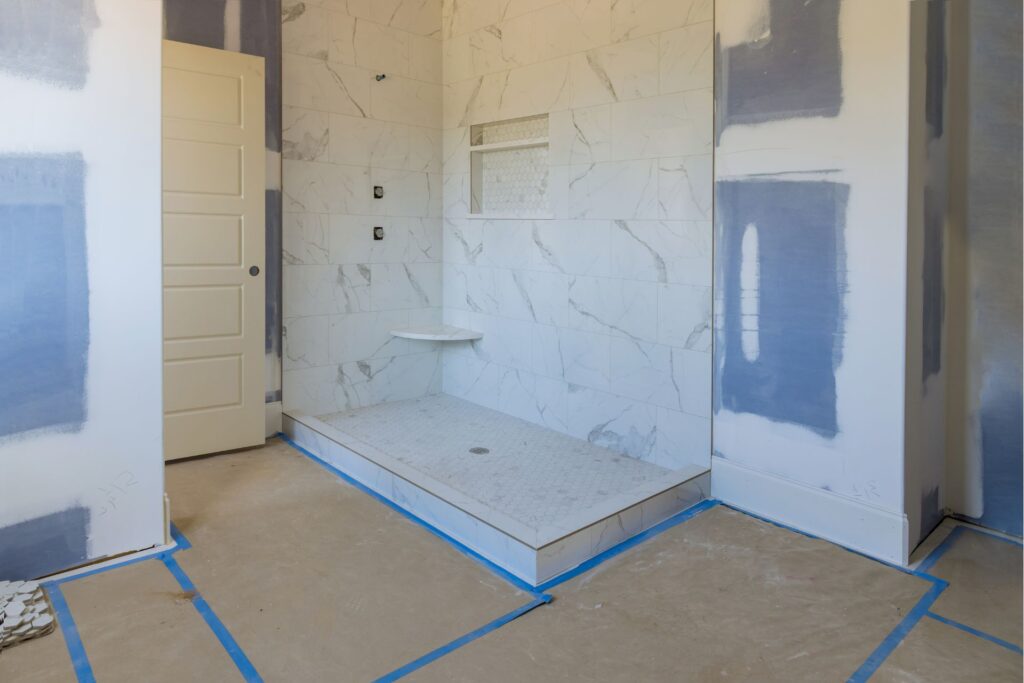
FAQs: About Best Material For Bathroom Walls NZ
What is the most durable material for bathroom walls in New Zealand?
Tiles are one of the most durable materials for bathroom walls, especially porcelain or ceramic options. They are water-resistant, long-lasting, and easy to clean. Acrylic panels are also highly durable and low-maintenance, making them another great choice for bathrooms.
Can I use regular paint on bathroom walls?
It is not recommended to use regular paint in bathrooms due to high moisture and humidity levels. Instead, opt for moisture-resistant or bathroom-specific paints that are formulated to withstand these conditions and prevent mold and mildew growth.
Is wood a good option for bathroom walls in NZ?
Wood can be used in bathrooms, but it must be properly treated or sealed to prevent water damage and warping. Treated wood or faux wood panels can give a warm, natural look, but they require more maintenance compared to other materials like tiles or acrylic panels.
What’s the best material for a bathroom in coastal areas of New Zealand?
In coastal areas, where humidity and moisture levels are higher, it’s important to choose materials that resist mold, mildew, and salt air corrosion. Tiles, acrylic panels, and glass panels are excellent options for coastal homes because they are waterproof and durable.
How do I prevent mold and mildew on bathroom walls?
To prevent mold and mildew, ensure proper ventilation in your bathroom by installing an exhaust fan or keeping windows open. Use mold-resistant materials like tiles, glass, or acrylic panels, and regularly clean grout lines, if applicable. Opt for moisture-resistant paint if using paint on walls.
Are acrylic panels a good choice for bathroom walls?
Yes, acrylic panels are a great choice for bathroom walls, especially in modern or budget-friendly renovations. They are completely waterproof, easy to install, and come in a variety of designs. While not as luxurious as tiles or glass, they are practical and affordable.
What is the most budget-friendly material for bathroom walls?
Moisture-resistant paint and vinyl wallpaper are the most budget-friendly options for bathroom walls. These materials are affordable, easy to apply, and available in various colors and designs. However, they may require more maintenance compared to higher-end materials like tiles or glass panels.
How often should I clean bathroom walls, and does the material matter?
The frequency of cleaning depends on the material. Tiles and glass panels should be cleaned regularly to prevent water stains, soap scum, and mold buildup. Acrylic panels require minimal maintenance but should still be wiped down frequently. Walls with moisture-resistant paint or vinyl wallpaper may need cleaning every few weeks to avoid mold or mildew.
Can I install bathroom wall materials myself, or should I hire a professional?
It depends on the material. DIYers can often handle moisture-resistant paint and vinyl wallpaper, as these are relatively easy to apply. However, materials like tiles, acrylic panels, and glass panels usually require professional installation to ensure proper sealing and longevity.
What’s the best material for a luxury bathroom in New Zealand?
For a luxury bathroom, consider using glass panels or high-end tiles like natural stone or porcelain. These materials provide a sleek, elegant look, are highly durable, and are resistant to moisture. They can elevate the style of any bathroom while ensuring long-term performance.
Conclusion
When choosing the best options for your bathroom renovation, it’s essential to consider different factors based on your specific needs. Whether you’re looking for budget-friendly choices, luxurious upgrades, or durable materials that will stand the test of time, there’s a solution to match every requirement. As you move forward with your renovation, keep in mind your personal style preferences, budget, and the practical needs of your space. By balancing these elements, you’ll be able to make an informed decision that complements both your lifestyle and home. We’d love to hear about your bathroom renovation experiences—feel free to share your thoughts or ask questions in the comments below. And remember, for more tailored advice, consulting local experts or visiting a showroom can provide you with hands-on guidance and help bring your vision to life.

